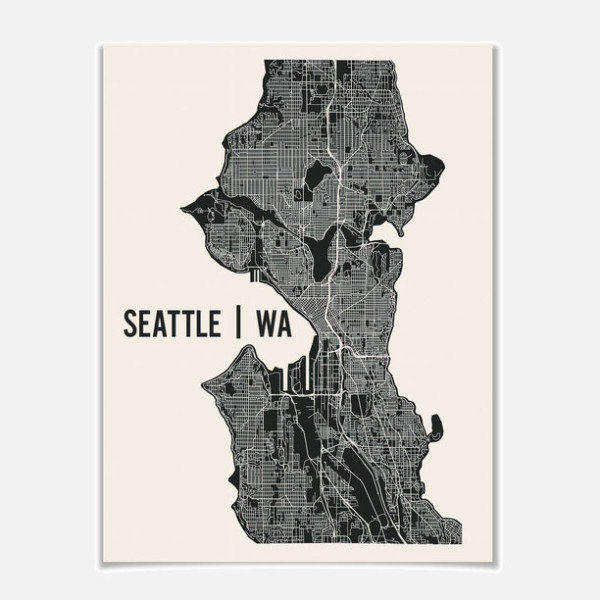At the Wright Exhibition Space in Seattle’s South Lake Union neighborhood, I recently stood in front of a large painting by Andy Warhol, Rorschach, from 1984. I had seen it before in the double-height gallery of the Seattle Art Museum, but in this sparely curated space, the piece took on a new resonance. Part of a beautiful exhibition, a rose is a rose is a rose, Warhol’s imposing work was framed on neighboring walls by Robert Mapplethorpe’s delicate black-and-white orchid porcelain plate and Hiroshi Sugimoto’s remarkably lifelike photograph of a wax figure of Catherine Parr. SAM curator Catharina Manchanda, the docent told us, had grouped the pieces to explore notions of the body and sexuality. My friend commented that Warhol’s piece brought to mind female genitalia, much as Georgia O’Keeffe’s paintings of flushed flowers evoke female anatomy. But what I saw first was that it looked like an x-ray. The black smears of Warhol’s paint seemed, to me, like the mirrored masses of a bilaterally symmetrical figure. A narrow white column between the left and right sides acted like a spine, both dividing and joining them.
Walking south across Lake Union and along Eastlake Avenue to meet this same friend the next week, I heard the rush of cars traveling along the I-5 freeway above. I smiled, remembering how, just the day before, I had mistaken the loquacious babble of a river for automotive traffic as my partner and I hiked to a waterfall on the Olympic Peninsula. In their hurry, the vehicles and running water sounded alike. But I-5, as I thought more, is also like the spine of Warhol’s Rorschach. It bisects Seattle’s elongated figure, whose narrow waist forms as Elliott Bay and Lake Washington reach in to cinch downtown and the Central District. The freeway’s surface and elevated stretches both unite and partition the city’s anatomy.

Map of Seattle, available for purchase at Fab design company. I-5 is the widest white line pictured, and it divides the eastern and western halves of the city.
These last weeks I’ve been taking much pleasure in the writings of Rebecca Solnit, an essayist who absorbingly brings together visual observation, the history of art, meditations on cultural understandings of landscape, feminism, and fiercely felt political participation. Essays from her 2003 book As Eve Said to the Serpent: On Landscape, Gender, and Art revisit, again and again, the idea of metaphor. In an essay called “Noah’s Alphabet” that examines the parallels of language and how humans relate to animals, Solnit writes, “Metaphor is a Greek word that literally means to transport something from one place to another; and today in Athens, Greece, the public transit system is called the Metaphor. One can literally take the Metaphor to work, or take the last Metaphor home, though in the rest of the world metaphors serve only as a medium of imaginative travel. They are, in fact, the transportation system of the mind, the way we make connections between disparate things, and because the connections are intuitive and aesthetic, they are the essence of the ways in which we think…” (As Eve Said to the Serpent: On Landscape, Gender, and Art, page 140)
And so Warhol’s Rorschach, a standing body, a warbling river, traffic sounds, and the ribbon of I-5 unfurled across Seattle’s lanky figure coalesce for me across time and space.
The Wright Exhibition Space is open from 10 am – 2 pm on Thursdays and Saturdays. Email [email protected] to request exhibition updates.